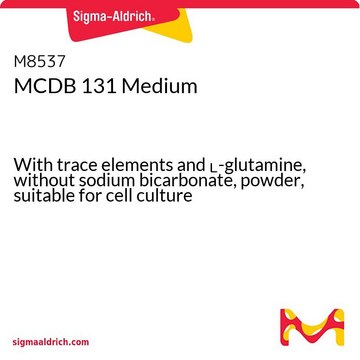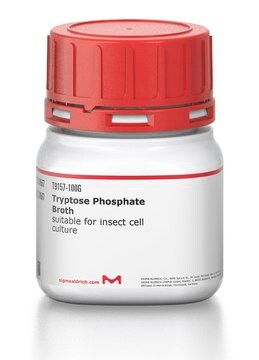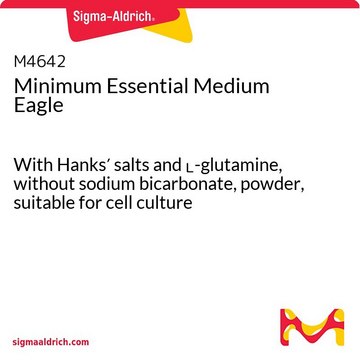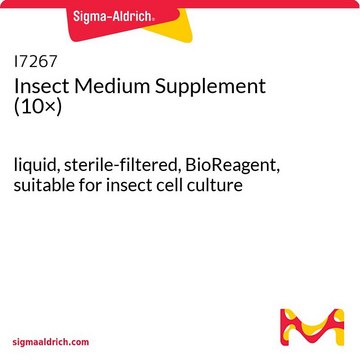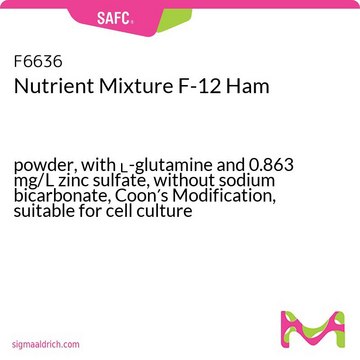L4386
L-15 Medium (Leibovitz)
With ʟ-glutamine and sodium pyruvate, powder, suitable for cell culture
Synonym(s):
Leibovitz L15
About This Item
Recommended Products
product name
L-15 Medium (Leibovitz), With L-glutamine, powder, suitable for cell culture
Quality Level
form
powder
technique(s)
cell culture | mammalian: suitable
impurities
endotoxin, tested
components
sodium pyruvate: 0.55 g/L
phenol red: 0.011 g/L
L-glutamine: 0.3 g/L
shipped in
ambient
storage temp.
2-8°C
Looking for similar products? Visit Product Comparison Guide
General description
Application
- to study the toxicity of silver nanoparticles (AgNPs) with primary cultures of Eisenia fetida coelomocytes
- to culture crab hepatopancreas and ovary tissues
- as a component of the dissociation medium for infusion of the pancreas of mice
Quantity
also commonly purchased with this product
supplement
Signal Word
Danger
Hazard Statements
Precautionary Statements
Hazard Classifications
Eye Dam. 1 - Skin Irrit. 2
Storage Class Code
11 - Combustible Solids
WGK
WGK 3
Flash Point(F)
Not applicable
Flash Point(C)
Not applicable
Certificates of Analysis (COA)
Search for Certificates of Analysis (COA) by entering the products Lot/Batch Number. Lot and Batch Numbers can be found on a product’s label following the words ‘Lot’ or ‘Batch’.
Already Own This Product?
Find documentation for the products that you have recently purchased in the Document Library.
Customers Also Viewed
Our team of scientists has experience in all areas of research including Life Science, Material Science, Chemical Synthesis, Chromatography, Analytical and many others.
Contact Technical Service


